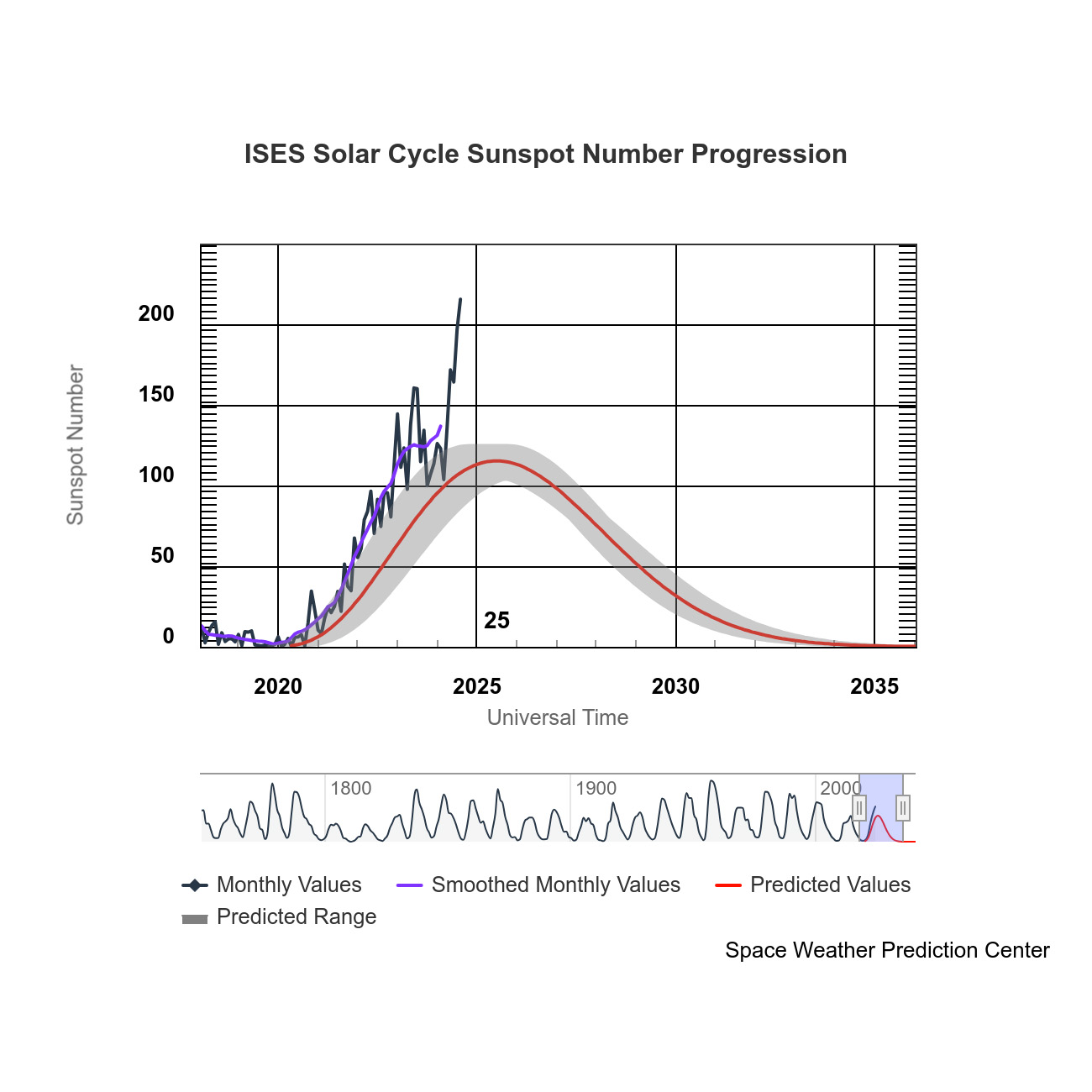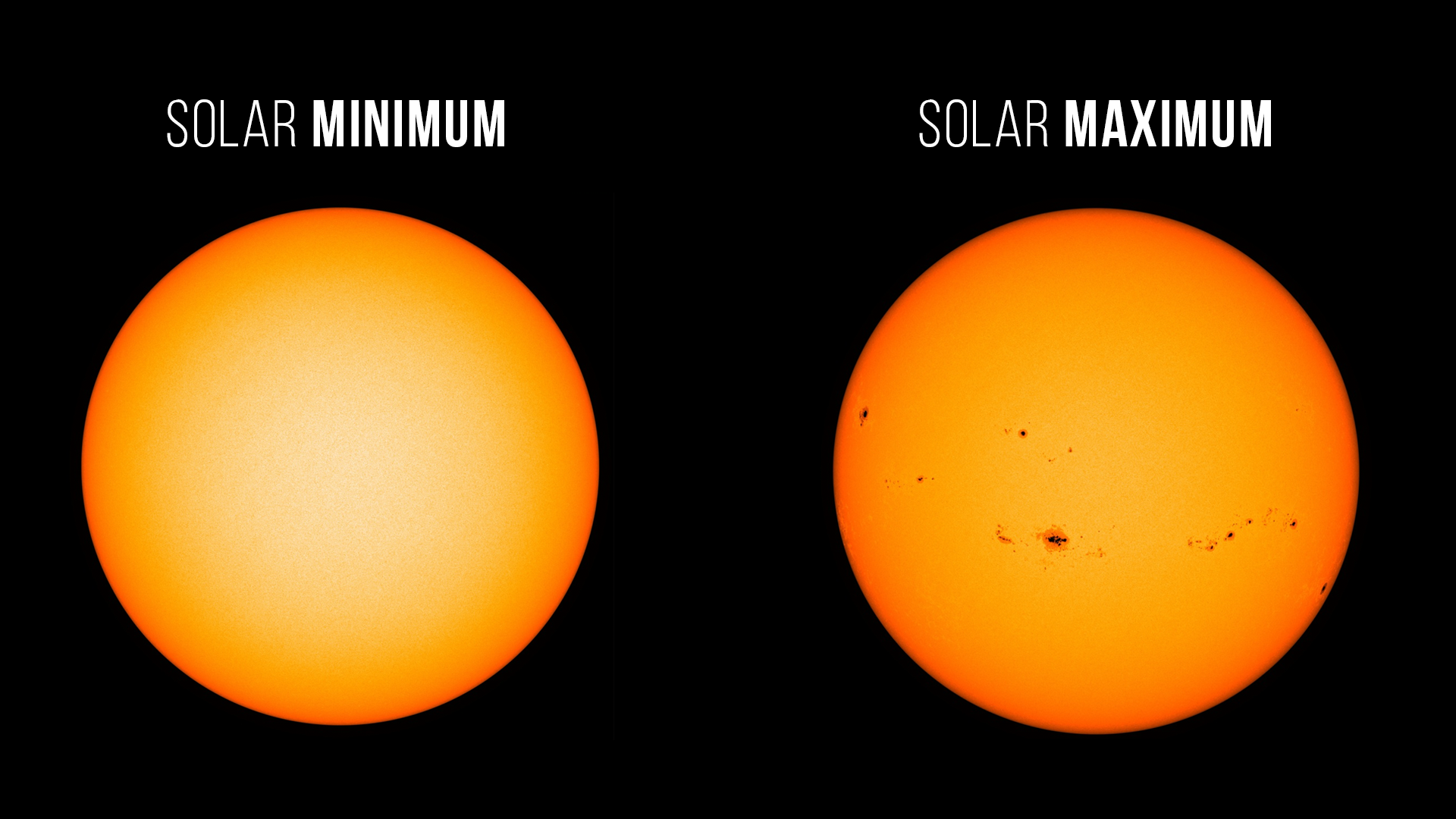Met Office
|
|
What’s next as the Sun reaches solar maximum phase?
We take an in-depth look at how the Sun’s solar cycle will influence auroral displays.
Earlier this month, NASA, the National Oceanic and Atmospheric Administration (NOAA) and the International Solar Cycle Prediction Panel confirmed that the Sun has reached its solar maximum period, which could continue for the next year.
With aurora visible in recent months for parts of the UK, the influence of the Sun and space weather on Earth has been of much interest.
For space weather experts, the recent increase in visibility of the auroras hasn’t been a surprise, with activity on the Sun’s surface following a natural long-term rhythm known as the solar cycle. It’s the job of forecasters to determine the strength and speed of individual space weather events as part of this cycle.

The above is from the NOA Space Weather Prediction Centre showing number of sunspots on the Sun as part of this solar cycle and the forecast in the coming years (Image: NOA's Space Weather Prediction Centre).
The solar cycle is an 11-year period from one solar minimum to the next. Solar minimum is when we see the fewest number of sunspots on the Sun’s surface, whilst solar maximum is when there’s a peak in the number of sunspots. With international experts agreeing that we’re now in the solar maximum phase, there’s an ongoing chance of further space weather activity, and ultimately the potential for aurora visibility here on Earth.
Space Weather Manager Krista Hammond is part of the Met Office Space Weather Operations Centre (MOSWOC). She recently said:
“We’re now in the solar maximum phase, which means there’s more frequent sunspots and solar activity in general. While it’s not possible to know precisely what this means for individual Earth-directed solar events, it does mean there will likely be further chances of aurora visibility in the UK in the coming months.
“While we’re in the solar maximum phase now, which could last a year, it’s not possible to know exactly when the number of sunspots peaked until some time after it has happened.”
Recent months have seen increased space weather, with a series of solar flares and coronal mass ejections occurring in quick succession in May 2024 creating the strongest geomagnetic storm on Earth in two decades. A similar, though less strong, event reached Earth earlier in October, providing aurora visibility as far south as parts of central and southern England and Wales.

(Image: NASA, Solar Dynamics Observatory)
What’s after solar maximum?
After the solar maximum phase, activity on the surface of the Sun will gradually reduce in the coming years as it transitions to solar minimum. However, this transition doesn’t mean there won’t be Earth-directed space weather and the chance for further visible auroras at times.
Krista continued:
“While the total number of sunspots will start to reduce after solar maximum, we will continue to see space weather throughout the solar cycle, even as overall activity declines. Indeed, in some solar cycles, the larger events can happen as the Sun transitions back towards solar minimum.
“It’s our job in MOSWOC to forecast these events in the coming months and years to minimise any potential disruption to satellite operations or some ground-based infrastructure.”
Forecasting ahead
While most of the public are aware of space weather from the auroral displays, the MOSWOC forecast is a crucial provider of warnings and alerts for satellite operators and infrastructure providers to minimise any potential impacts on the public.
A report published earlier this year stated that the Met Office’s space weather capability will be worth over £600 million to the UK over the next decade, highlighting the importance of forecasting to satellites, infrastructure and the public.
Over the coming months, MOSWOC will continue to provide forecasts for any upcoming space weather that could reach Earth, including those which could enhance the auroras.
Find the latest space weather forecast on the Met Office website.
About this blog
This is the official blog of the Met Office news team, intended to provide journalists and bloggers with the latest weather, climate science and business news, and information from the Met Office.
Original article link: https://www.metoffice.gov.uk/blog/2024/whats-next-as-sun-reaches-solar-maximum-phase


.png)